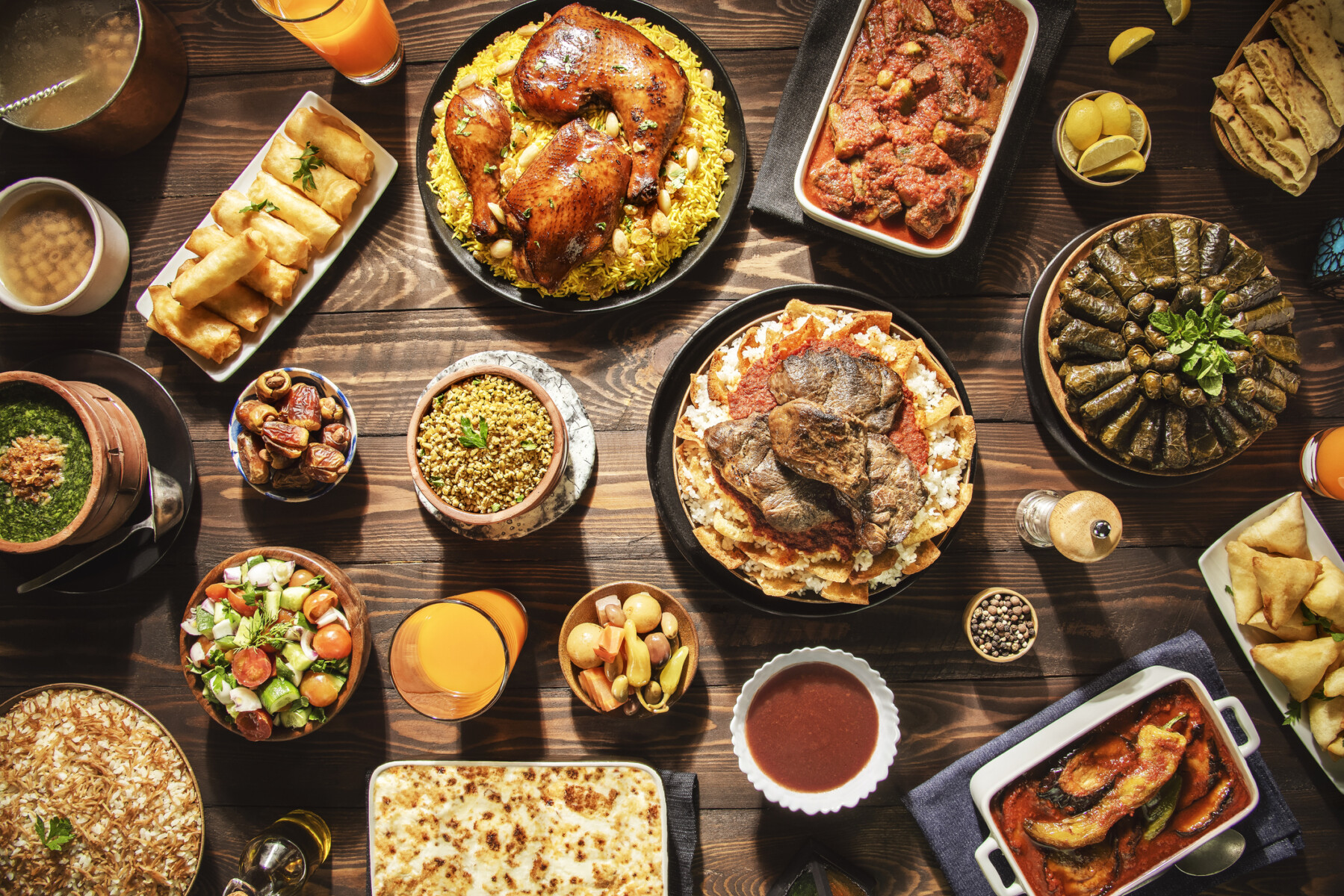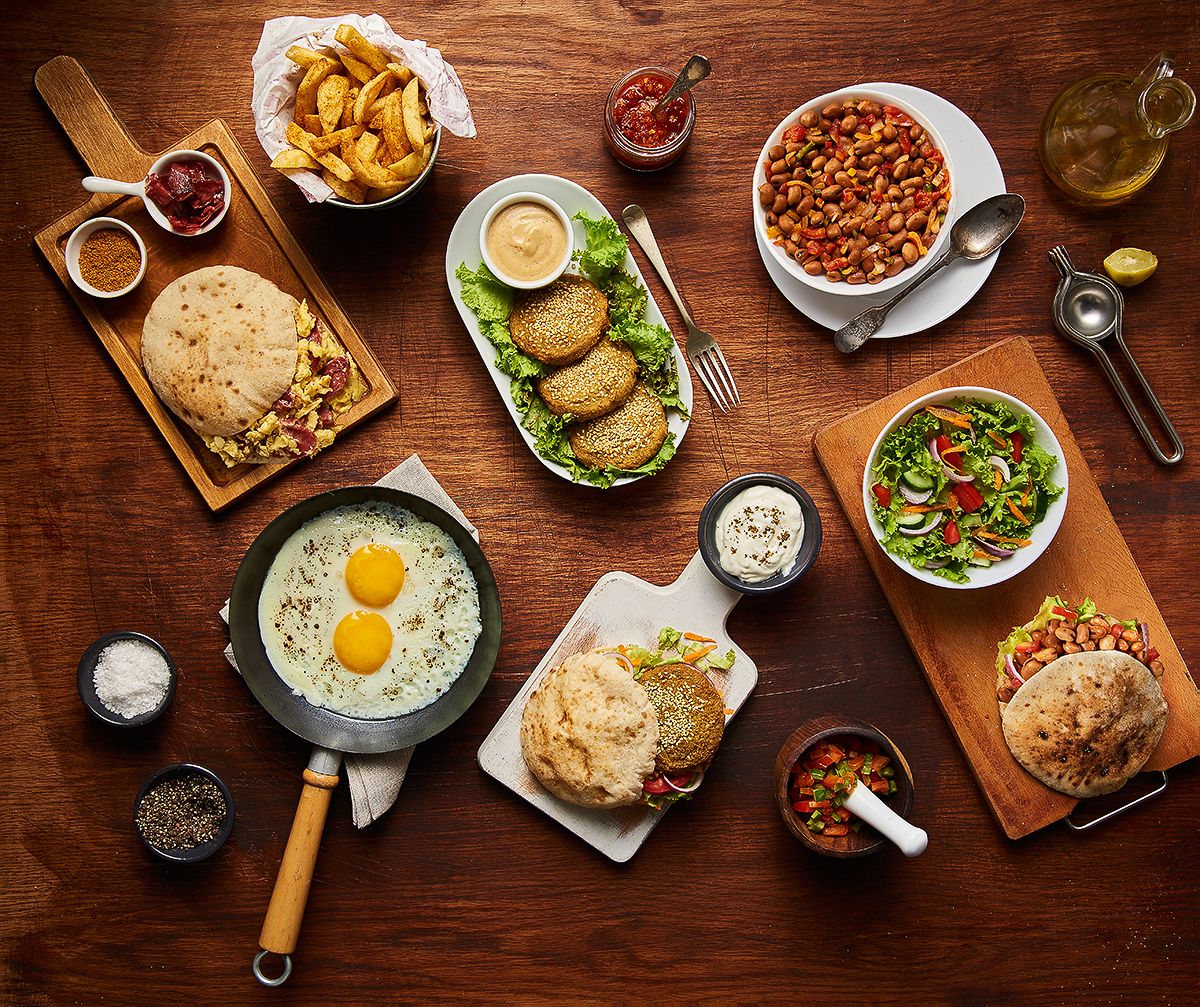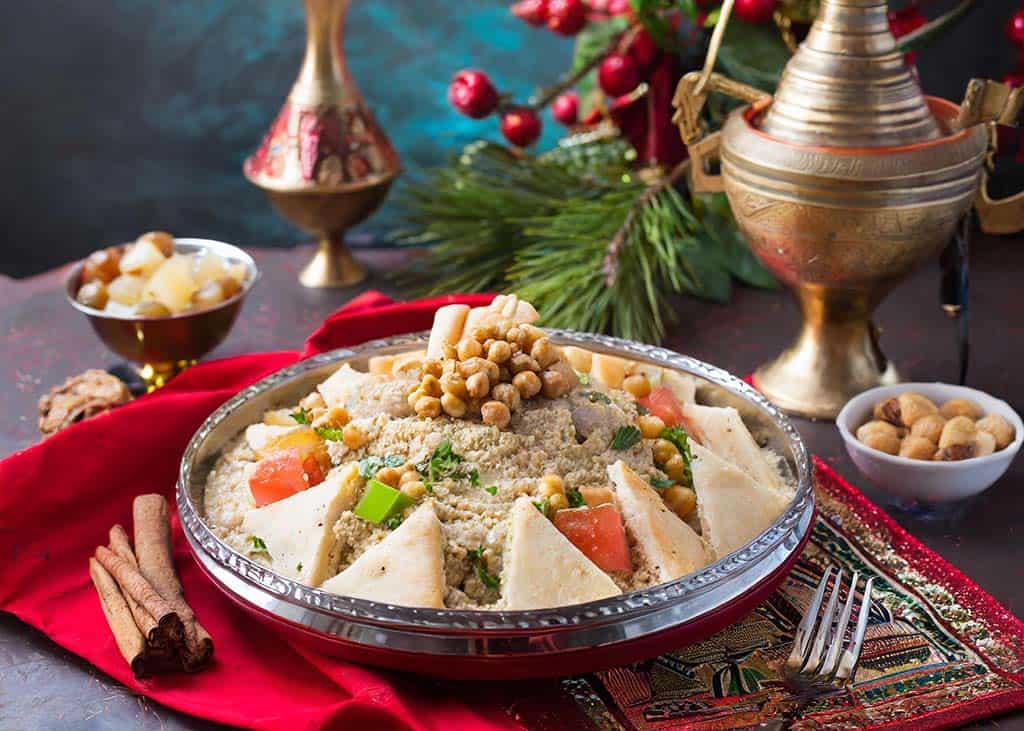Unlock the Flavors of Egypt: A Culinary Journey

Introduction
Overview of Egyptian Cuisine
Egyptian cuisine is a vibrant tapestry of flavors, textures, and aromas that tell the story of the nation’s rich history. This culinary landscape is influenced by various cultures and traditions, making it unique and diverse.
Significance of Egyptian Culinary Heritage
The significance of Egyptian culinary heritage cannot be overstated. It not only showcases the country’s agricultural bounty but also reflects its sociocultural evolution.
Key points include:
- Cultural Identity : Food is a key part of Egyptian daily life and celebrations.
- Rituals and Traditions : Dishes are often linked to festivals and family gatherings.
- Artistic Expression : Cooking techniques and recipes are passed through generations, preserving stories and customs.
This deep connection to food allows both locals and visitors to explore Egypt’s essence through its culinary delights.

Historical Influences on Egyptian Cuisine
Ancient Egyptian Food Practices
The roots of Egyptian cuisine can be traced back to ancient Egypt, where the Nile’s fertility provided a bounty of ingredients. Grains, legumes, and vegetables formed the backbone of their diet.
- Staples : Bread and beer were daily essentials.
- Fruits and Vegetables : Onions, garlic, and lentils were common.
- Meats : Fish and poultry were often reserved for special occasions.
Impact of Arab, Ottoman, and European Cultures
As Egypt evolved, it absorbed various culinary traditions from Arab, Ottoman, and European influences, enriching its food culture. For example,
- Arab Influence : Introduced rice and spices like cumin and coriander.
- Ottoman Influence : Brought in new cooking techniques, such as grilling and kabobs.
- European Influence : Introduced pastries and dairy dishes, incorporating ingredients like cheese.
This blend of flavors and techniques has made Egyptian cuisine a true melting pot of historical influences, offering something delightful for every palate.

Staple Ingredients in Egyptian Cooking
Wheat, Rice, and Barley
At the heart of Egyptian cooking lie essential grains like wheat, rice, and barley. These ingredients not only serve as dietary staples but also form the foundation for many traditional dishes.
- Wheat : Used primarily to make bread, a daily staple in Egyptian households.
- Rice : Often served as a side dish or incorporated into koshari, a popular national dish.
- Barley : Historically a crucial crop, it has seen a resurgence in popularity due to its health benefits.
Legumes, Vegetables, and Spices
Complementing grains, legumes, vegetables, and spices add depth and flavor to Egyptian recipes, transforming simple ingredients into savory meals.
- Legumes : Fava beans are central in dishes like ful medames, a breakfast favorite.
- Vegetables : Fresh produce, such as okra and eggplant, are often used in stews and salads.
- Spices : Cumin, coriander, and garlic are frequently employed, infusing dishes with warmth and aroma.
With these essential ingredients, Egyptian cuisine thrives on creating hearty, wholesome meals that resonate with both tradition and taste.

Traditional Egyptian Dishes
Koshari: The National Dish
Koshari stands proudly as Egypt’s national dish, reflecting the country’s love for hearty, filling meals that are both nutritious and affordable. This delightful combination features:
- Ingredients : Rice, lentils, macaroni, and a zesty tomato sauce, topped with fried onions.
- Popularity : Found everywhere, from street vendors to upscale restaurants, koshari is a beloved comfort food.
Many families have their own unique recipes, often passed down through generations, making it a staple at gatherings.
Mahshi and Hawawshi: Stuffed Delights
Talking about comfort food brings to mind mahshi and hawawshi, both of which reflect the creativity in stuffing ingredients.
- Mahshi : Vegetables like zucchini or bell peppers filled with a seasoned mixture of rice, herbs, and sometimes meat.
- Hawawshi : Pita bread stuffed with spiced minced meat, baked to crispy perfection, often served with pickles.
Both dishes exemplify the warmth of Egyptian hospitality, perfect for sharing with friends and family.
Ful Medames: A Breakfast Favorite
Finally, no discussion of traditional Egyptian dishes would be complete without ful medames. This iconic breakfast dish is made from fava beans, simmered to creamy goodness.
- Serving Style : Often enjoyed with olive oil, lemon juice, and served with pita bread.
- Cultural Significance : A morning ritual for many Egyptians, fulfilling and nourishing for a busy day ahead.
These dishes highlight the robust flavors and culinary traditions that make Egyptian cuisine truly special, inviting food lovers to experience a taste of Egypt.

Regional Variations in Egyptian Cuisine
Alexandria vs. Cairo vs. Upper Egypt
Egypt boasts diverse regional variations in its cuisine, primarily influenced by geography and tradition.
- Alexandria : Known for its seafood dishes, such as grilled fish and shrimp cocktails. The coastal city’s Mediterranean charm reflects in lighter, flavorful meals.
- Cairo : As the capital, Cairo offers a vibrant mix of traditional and modern cuisine. Classic dishes like koshari can be found alongside international culinary influences.
- Upper Egypt : This region emphasizes hearty meals, often featuring robust stews and traditional breads, showcasing local grains and legumes.
Each city provides a unique culinary experience, inviting visitors to explore their variations.
Coastal Cuisine vs. Desert Delicacies
The contrast between coastal cuisine and desert delicacies is striking, offering a delightful exploration of flavors.
- Coastal Cuisine : Fresh fish, seafood, and dishes like seafood casserole highlight the abundance of the Mediterranean Sea. These meals are often complemented by local herbs and sauces.
- Desert Delicacies : In contrast, the desert regions serve up rich, warming dishes, including tagines and stews, often featuring camel meat or hearty grains adapted to sustain amidst arid landscapes.
These regional distinctions showcase how geography shapes culinary traditions, making Egyptian cuisine a vast mosaic of flavors and experiences.

Street Food Culture in Egypt
Hawkers and Food Carts
Diving into the lively street food culture of Egypt is a must for any food lover. Street vendors, often called hawkers, can be found bustling on every corner, offering a tantalizing array of flavors.
- Vibrant Atmosphere : The streets are filled with the aroma of grilled meat, frying falafel, and simmering stews, creating an exciting culinary buzz.
- Convenience : Food carts make it easy to grab a quick, delicious meal on the go, catering to the busy lifestyles of locals and tourists alike.
From bustling markets to quiet alleyways, these street vendors play a significant role in the Egyptian culinary scene.
Must-Try Street Snacks
Among the endless options, several must-try street snacks define Egyptian street food culture:
- Koshari : Often available from carts, this filling mixture of rice, lentils, and pasta topped with tomato sauce is a favorite.
- Falafel : Crispy and golden, these chickpea balls are perfect in a pita pocket, served with tahini sauce and fresh veggies.
- Sambousak : Deep-fried pastry filled with spiced meat or cheese, enticing both the eye and the palate.
Sampling these street snacks not only satiates hunger but also provides a glimpse into the heart of Egyptian food culture, making every bite a memorable experience.

Beverages and Desserts
Traditional Egyptian Beverages
No culinary journey through Egypt is complete without exploring its diverse beverages, which serve both refreshing and traditional roles.
- Kushari Juice : A delightful blend of tamarind and sugar, enjoyed for its tangy flavor, often served alongside koshari.
- Sahlab : A warm, creamy drink made from orchid tubers, topped with cinnamon and nuts—perfect for cooler nights.
- Mint Tea : Refreshing and aromatic, this tea is a staple in Egyptian households, often enjoyed socially over long conversations.
These beverages not only quench thirst but also complement the rich flavors of Egyptian cuisine.
Popular Sweet Treats and Pastries
Turning to desserts, Egyptian sweets are a delightful ending to any meal.
- Baklava : Layered pastry filled with nuts and sweetened with syrup, this delicious treat is loved across the region.
- Basbousa : A semolina-based cake soaked in syrup, sometimes garnished with almonds, it offers a sweet, moist texture that’s hard to resist.
- Om Ali : A traditional bread pudding made with milk, nuts, and raisins, served warm—an indulgent must-try.
These sweet treats showcase the rich culinary traditions of Egypt, enticing anyone with a sweet tooth to explore the country’s flavorful desserts.

Modern Trends in Egyptian Gastronomy
Fusion Cuisine and Contemporary Chefs
In recent years, Egyptian gastronomy has embraced modern trends, including fusion cuisine that blends traditional flavors with global influences.
- Creative Chefs : Contemporary chefs are pushing boundaries by incorporating unexpected ingredients and techniques. For example, serving koshari with an Asian twist, adding curry spices or incorporating unique toppings.
- Dining Experiences : Restaurants are offering innovative tasting menus that connect diners with Egypt’s culinary heritage while showcasing seasonal local ingredients, making each dining experience unique.
This evolving culinary scene reflects a dynamic approach to preserving tradition while embracing new ideas.
Sustainable Practices and Culinary Tourism
Equally important is the rising emphasis on sustainability within Egypt’s culinary landscape. Many establishments have adopted eco-friendly practices, such as:
- Local Sourcing : Supporting local farmers and producers, reducing carbon footprints while promoting regional flavors.
- Waste Reduction : Implementing strategies to minimize food waste in restaurants and markets, contributing to environmental health.
Culinary tourism is also gaining traction, inviting visitors to explore authentic Egyptian cuisine through cooking classes and food tours. Travelers can engage with local chefs, taste regional specialties, and understand the cultural significance of their meals.
Together, these trends enrich Egypt’s culinary heritage, blending the past with a sustainable and innovative future.

Cooking Techniques and Methods
Grilling, Baking, and Stewing
The art of Egyptian cooking is greatly defined by its various techniques, allowing for rich flavors and unique textures.
- Grilling : Popular for meats and vegetables, grilling adds a smoky depth to dishes like kebabs and hawawshi, making them perfect for social gatherings.
- Baking : Traditional breads and pastries are baked in wood-fired ovens, imparting a distinct flavor that is difficult to replicate. For instance, a fresh batch of pita bread straight from the oven is an irresistible addition to any meal.
- Stewing : This slow cooking method is employed for dishes like molokhia, where the flavors meld together, creating hearty and comforting meals perfect for family gatherings.
These techniques embody the heart of Egyptian culinary practices, allowing home cooks and chefs alike to impart their distinct touch.
Influence of Clay Pot Cooking
An age-old technique that stands out in Egyptian kitchens is clay pot cooking, known for its effectiveness in enhancing flavors.
- Flavor Retention : Cooking in clay pots allows for even heat distribution, retaining moisture and natural flavors, leading to tender dishes.
- Cultural Heritage : Many families still use clay pots handed down through generations, showcasing a sense of tradition and connecting to their ancestors.
Personal anecdotes reveal that meals cooked in these pots often become cherished memories shared over family gatherings, reinforcing the cultural significance of this method.
These cooking techniques not only highlight the rich culinary history of Egypt but also demonstrate how tradition continues to shape modern culinary practices.

Celebratory Feasts and Customs
Ramadan Specialties
During Ramadan, Egyptian kitchens come alive with the fragrance of traditional dishes crafted for iftar—the meal breaking the fast.
- Dates and Water : Traditionally, the fast is broken with dates and water, symbolizing warmth and hospitality.
- Popular Dishes : Ful medames and koshari are staples, providing nourishment after a long day of fasting.
- Sweet Treats : Desserts like qatayef (stuffed pancakes) and kunafa become favorites, often prepared in large quantities for family gatherings and shared among neighbors.
These culinary traditions not only nourish the body but also foster a deep sense of community and connection during this holy month.
Wedding and Festive Menus
Weddings and festive celebrations in Egypt are marked by lavish feasts that showcase the country’s rich culinary heritage.
- Lavish Buffets : Dishes such as roasted lamb, stuffed pigeons, and various rice dishes are commonly featured.
- Dessert Tables : An array of sweets, like basbousa, baklava, and fresh fruit platters, adds a delightful touch to any celebration.
Personal stories often recall how families come together during these events, contributing their special recipes and culinary knowledge, ensuring the festivities are a mix of love, tradition, and joy.
These celebratory customs not only highlight the importance of food in Egyptian culture but also emphasize the roles of community and family in gathering together to share both meals and moments.

Resources for Exploring Egyptian Cuisine
Cookbooks and Online Recipes
For those eager to delve into the flavors of Egypt, an array of cookbooks and online resources are available, making it easier than ever to recreate traditional dishes at home.
- Notable Cookbooks :
- “The Egyptian Cookbook” offers a rich collection of authentic recipes.
- “A Taste of Egypt” by the renowned chef, Osama El Sayed, combines traditional recipes with contemporary twists.
- Online Resources : Websites such as Taste of Home and YouTube channels showcase step-by-step guides to preparing beloved dishes, making home cooking accessible and enjoyable.
Venturing into these resources can transform a simple meal into a delightful culinary adventure, bringing a piece of Egypt to your kitchen.
Culinary Tours and Cooking Classes
For a more immersive experience, culinary tours and cooking classes in Egypt are perfect for those seeking to deepen their understanding of the country’s food culture.
- Hands-On Classes : Many local chefs offer classes that incorporate visits to local markets for ingredient sourcing, followed by cooking sessions in a home kitchen, providing an authentic experience.
- Food Tours : Exploring neighborhoods known for street food or historic markets can introduce travelers to hidden gems and lesser-known dishes, often paired with the stories behind them.
Personal experiences from these tours often highlight the joy of sharing a meal with local families, learning about their culinary secrets firsthand, and the vibrant conversations that accompany these delicious dishes.
Together, these resources invite everyone, from enthusiasts to seasoned chefs, to discover and celebrate the diverse and delectable world of Egyptian cuisine.

XII. Conclusion
Summary of Egypt’s Culinary Diversity
Egypt’s culinary landscape is a rich tapestry woven from various influences and traditions, echoing its vibrant history. From sizzling street food to sumptuous feasts, the flavors reflect a blend of the ancient and the modern.
- Key Dishes : From koshari and ful medames to sweet treats like baklava, there’s something for everyone.
- Regional Variations : From the coastal cuisine of Alexandria to the hearty dishes of Upper Egypt, each region offers unique tastes and techniques.
This culinary diversity not only tantalizes the taste buds but also tells a story of Egypt’s cultural heritage.
Invitation to Explore and Experience the Flavors of Egypt
Whether you’re a seasoned chef or a curious food lover, there’s no better time to explore the flavors of Egypt.
- Try Cooking : Use cookbooks and online resources to recreate iconic dishes in your own kitchen.
- Join Culinary Tours : Experience local markets, cooking classes, and food tours to see the culture come alive.
Embrace this invitation to embark on a gastronomic adventure. Share your experiences, savor new flavors, and allow the tastes of Egypt to inspire your culinary journey. There’s a world of flavor waiting to be discovered!




